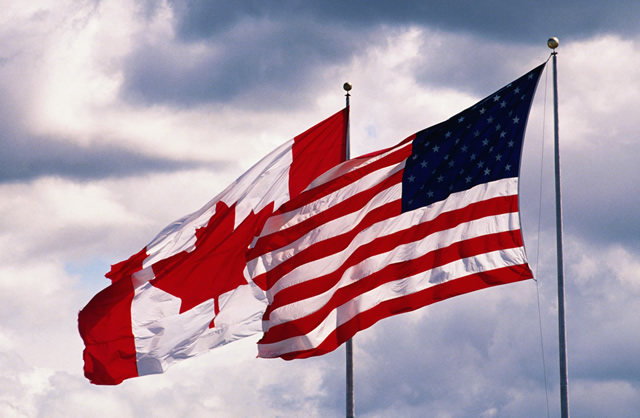Canada exports almost all of its energy to the United States, but because of resistance from the Obama Administration to approving the construction of the Keystone XL pipeline, that could soon change. Canadian Prime Minister Stephen Harper told President Obama that as the U.S. delays, Canada will begin diversifying by shipping its oil to Asian markets. Harper said of the delay:
This highlights why Canada must increase its efforts to ensure it can supply its energy outside the U.S. and into Asia in particular. Canada will step up its efforts in that regard and I communicated that clearly to the president.
The Keystone XL pipeline, which would run 1,700 miles from Alberta, Canada to the Gulf coast, would bring an additional 700,000 to 830,000 barrels of oil to the United States per day. Environmental protestors are trying to block construction because of their opposition to fossil fuels, especially coming from tar sands, because oil from tar sands emits more greenhouse gases (GHGs)—although the incremental impact of increased GHGs is not as large as environmentalists purport it to be. The Administration said it would make a decision by the end of the year and was weighing the push from labor unions to approve the pipeline versus the push from environmental activists to shut it down. President Obama ultimately punted, delaying the decision until after the 2012 election.
It would be foolish to think that delaying the pipeline or not constructing it entirely meant that Canadian oil would sit in the ground. With China’s rapid economic growth, it’s no surprise that that country would welcome the opportunity to import more oil from Canada. In fact, Canadian Natural Resource Minister Joe Oliver said China was “very eager” to get oil from Canada.
As my colleague David Kreutzer wrote back in May:
Block the XL pipeline if you think the environment will be better served by shipping Canadian oil an extra 6,000 miles across the Pacific in oil-consuming super tankers and then refining it in less-regulated Chinese refineries. In addition, be aware that replacing the Canadian oil means the U.S. also must import more oil by tankers, which are less efficient than pipelines.
Another concern for environmentalists has been the route of the pipeline, particularly in Nebraska’s Sand Hills region, because it runs over the Ogallala water aquifer. TransCanada Corp., the firm behind the construction of the pipeline, said it would work with the state of Nebraska to examine rerouting the pipeline, despite the fact the U.S. Department of State conducted a thorough environmental review and concluded that the pipeline poses few environmental risks. In fact, just a few days ago, TransCanada spokesman James Millar told National Journal that “a delay doesn’t make sense. This has been an exhaustive, 39-month review, the longest review ever for a cross-border crude-oil pipeline in the United States. There is no new information to come forward. There is no reason not to make a decision.”
Even though TransCanada is working with Nebraska to reroute the pipeline, a decision won’t come any sooner. Rerouting the pipeline means another Department of State environmental impact statement, and the whole process would take until the first quarter of 2013 at the earliest.
We’re still going to need jobs in 2013, but we could really use them in 2012.































